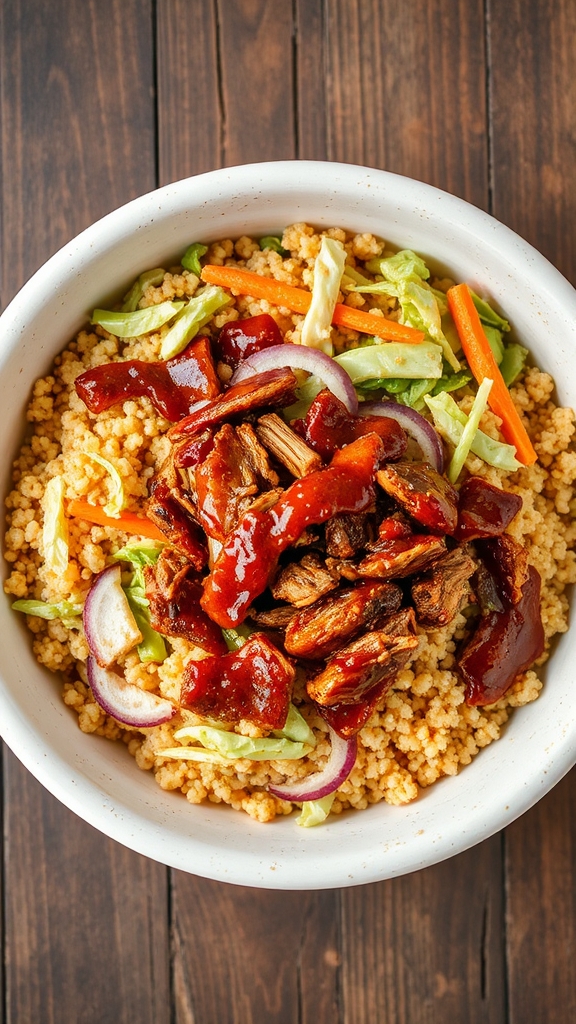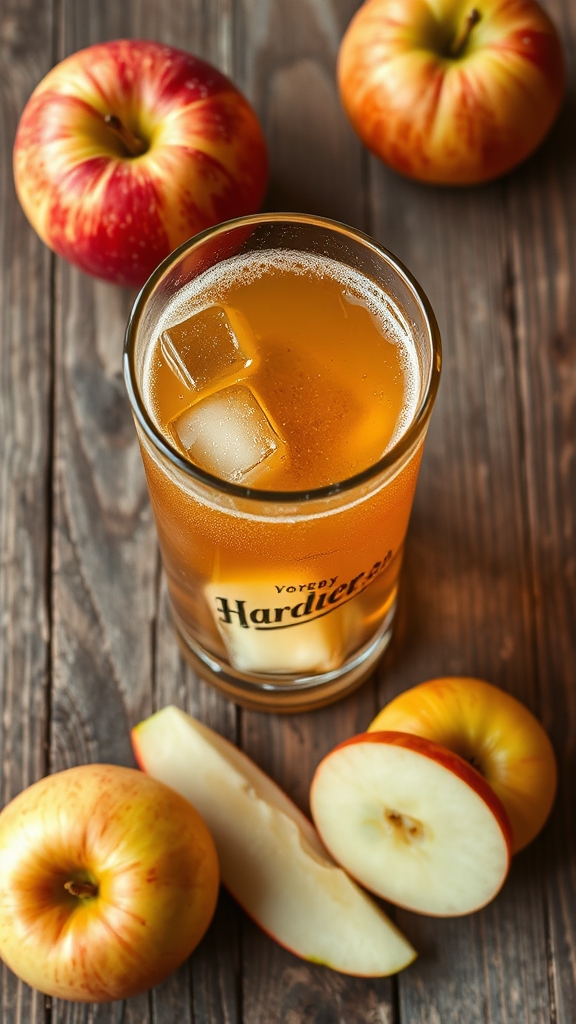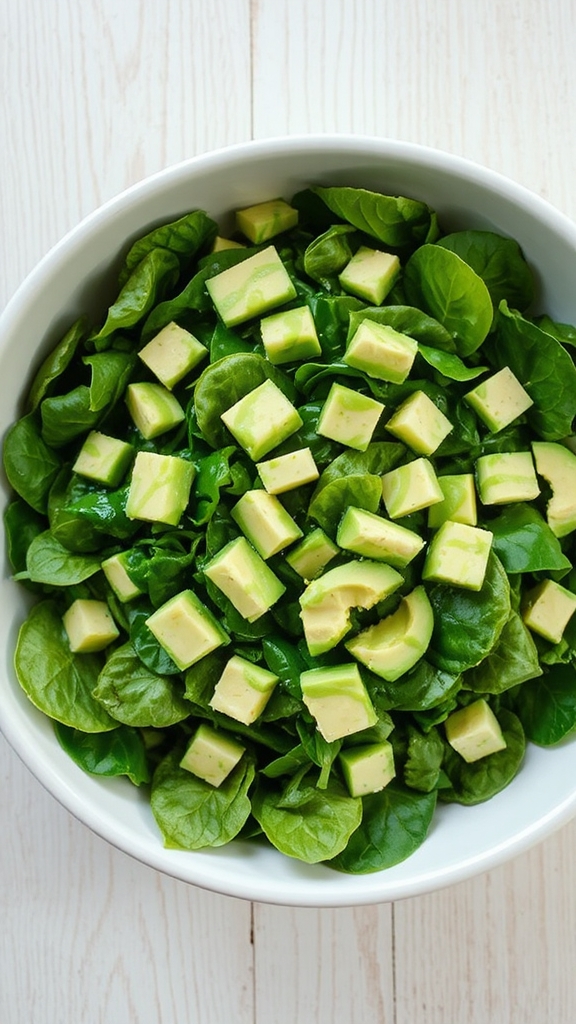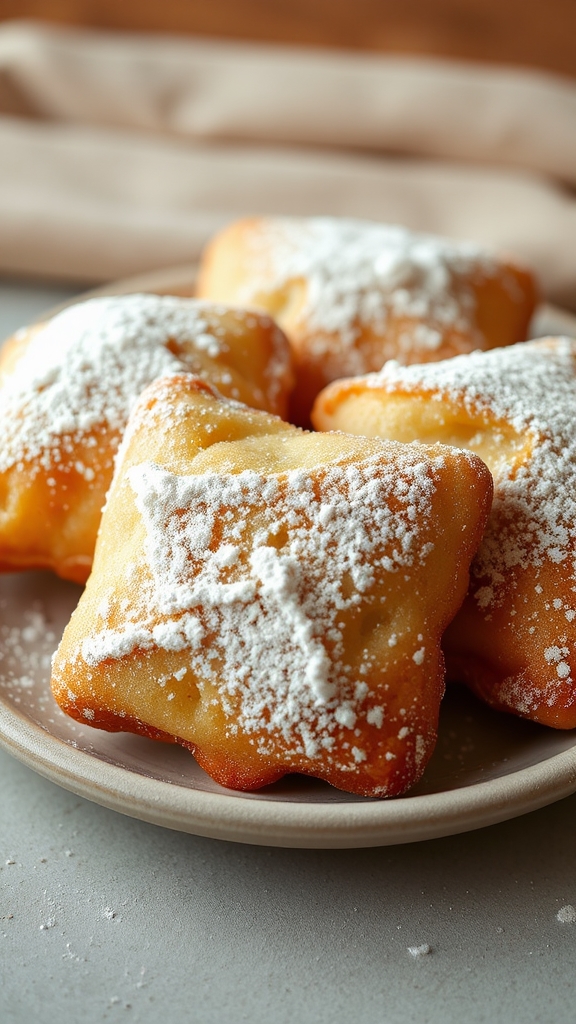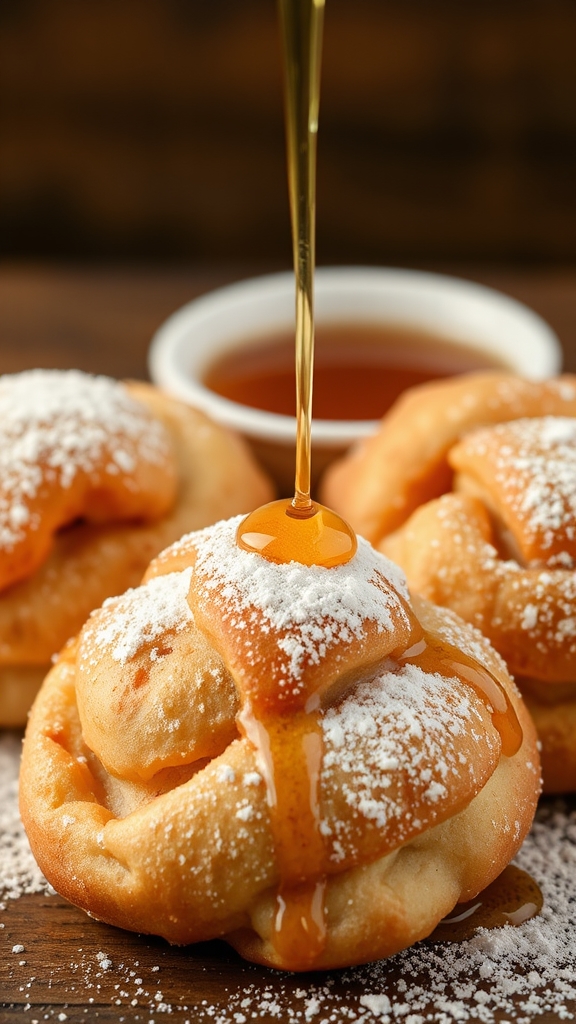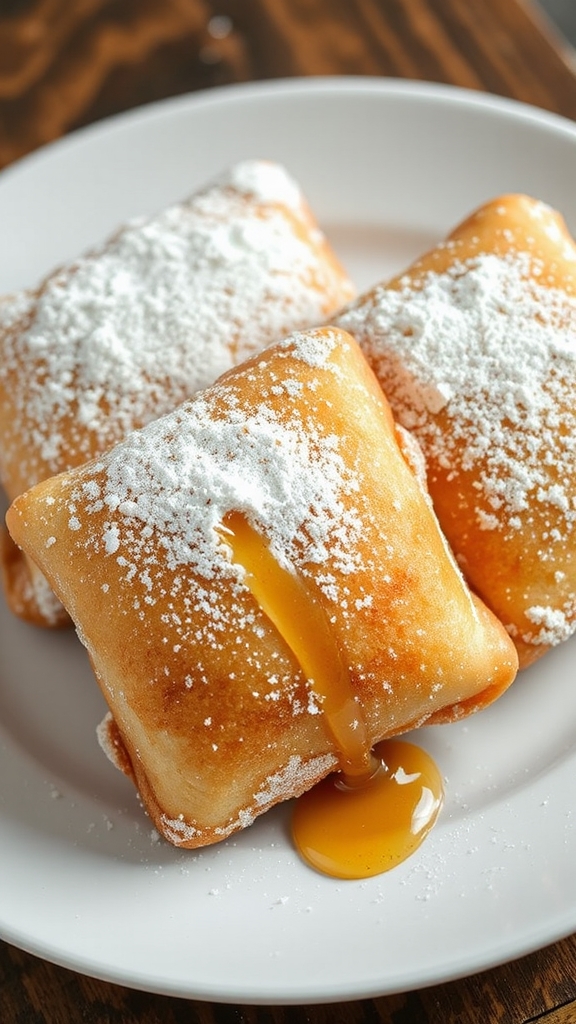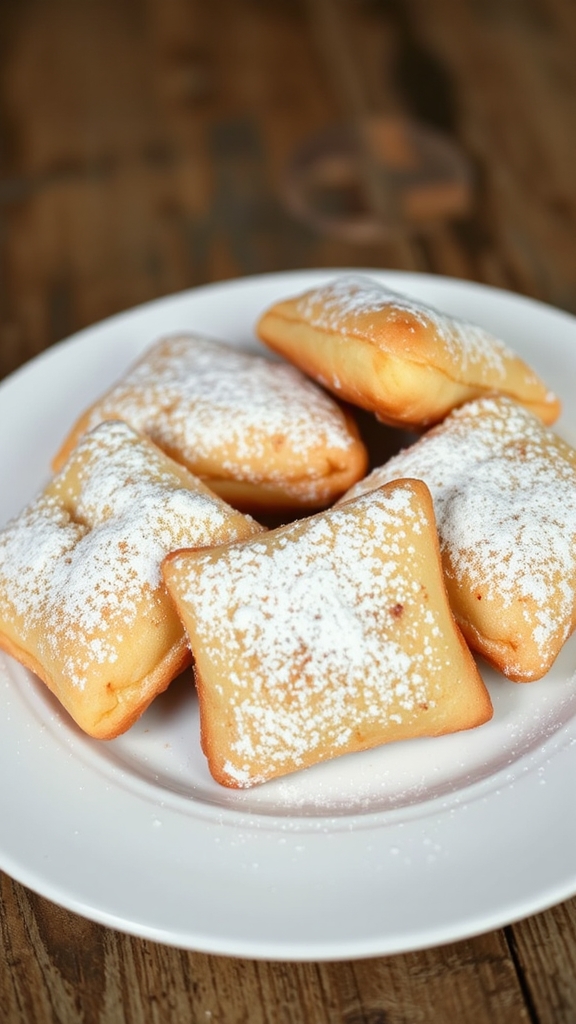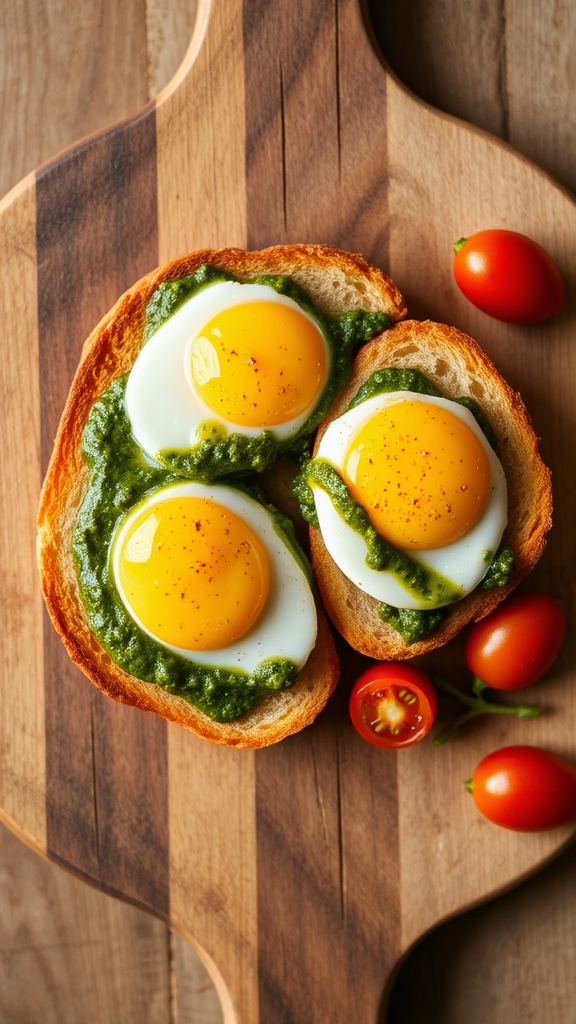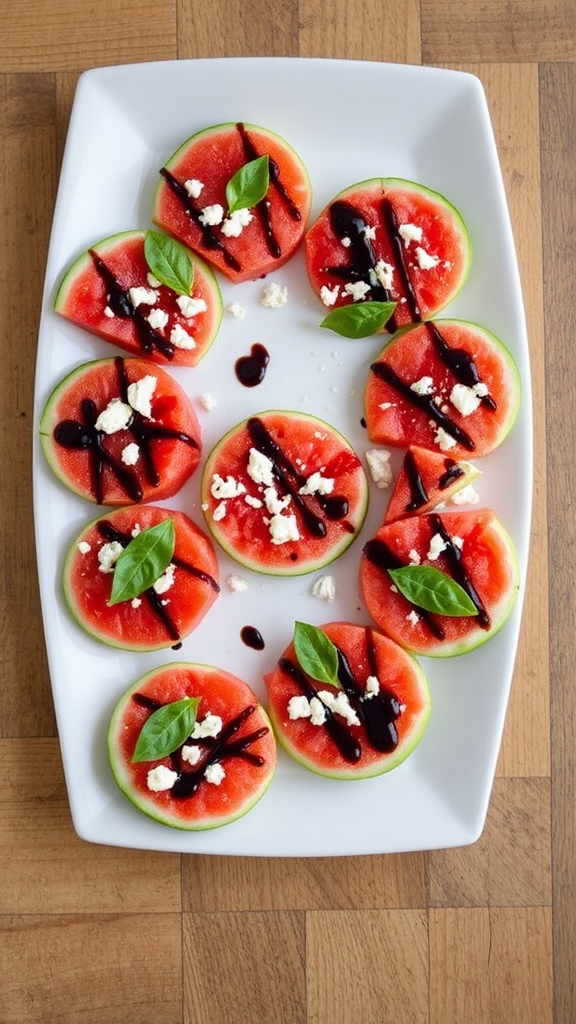New Orleans Beignets – Louisiana | Fried Dough, Powdered Sugar, Cinnamon, Honey
Witness the irresistible allure of New Orleans beignets, dusted with powdered sugar and enhanced by cinnamon and honey—will you master this Louisiana treat?

I’ve always loved New Orleans beignets, those fluffy squares of fried dough hailing from Louisiana’s French roots, dusted generously with powdered sugar for that irresistible sweetness. You can amp them up with a cinnamon sprinkle or honey drizzle for extra flavor twists that capture the Creole spirit. If you’re hooked, I’ll walk you through the full scoop on making them yourself.
History
New Orleans beignets trace their origins to French settlers in Louisiana during the 18th century, evolving from traditional French fritters into a staple of Creole cuisine that reflects the city’s diverse cultural heritage, blending European, African, and Native American influences.
Regional variations include the classic square-shaped, powdered-sugar-dusted beignets of New Orleans, which differ from denser French versions or those with fillings in other areas, signifying the adaptation of immigrant recipes to local tastes and ingredients.
These treats hold cultural significance as symbols of Louisiana’s festive spirit, traditionally served during occasions like Mardi Gras celebrations, breakfast at iconic spots such as Café du Monde, or casual gatherings that embody the warmth of Southern hospitality.
Ingredients
- Alright, first up, we’ve got 1 cup of warm water—think about 105-115°F, because if it’s too cool, your yeast might just sit there sulking, or too hot and, whoops, you’ve got a yeast funeral on your hands, which nobody wants when we’re aiming for fluffy beignets.
- Next, 1/2 cup of granulated sugar, the sweet stuff that feeds the yeast and gives those beignets that irresistible hint of caramelized goodness—now, don’t skimp here, or you’ll end up with something as bland as my attempts at being subtle.
- Then, 1 packet of active dry yeast, about 2 1/4 teaspoons, the tiny magic maker that puffs everything up—ever wonder why some recipes swear by this little guy? It’s like the unsung hero, turning simple dough into light, airy clouds, if only life were that easy for the rest of us.
- One large egg, fresh and ready to bind it all together, adding richness and a touch of golden color—it’s that ingredient where you pause and think, how does something so ordinary help create something extraordinary, almost like a secret ingredient in a folktale.
- Half a cup of evaporated milk, not the regular kind, but the concentrated version that brings creaminess without the fuss—picture this as the comforting hug your dough needs, making it tender and oh-so Southern.
- A full teaspoon of salt, because even in sweet treats, a little balance keeps things from tipping into overly sweet territory, and let’s face it, who wants a dessert that’s as one-note as a stuck record?
- Four cups of all-purpose flour, plus a bit extra for dusting—flour’s the backbone, the sturdy base that holds everything in place, though I always end up with a countertop that looks like a flour snowstorm, a messy but forgivable crime.
- Quarter cup of unsalted butter, softened to that perfect, squishy state, because it adds the flakiness and flavor that make beignets worth the effort—melt in your mouth? More like melt into your heart, if dough could have feelings.
- Vegetable oil for frying, enough to fill your pot to about 2-3 inches deep, the neutral oil that gets hot and crispy without overpowering the taste—now, is it just me, or does frying feel like a high-stakes dance, where timing is everything to avoid greasy mishaps?
- Powdered sugar for dusting, generously applied because, really, what’s a beignet without that snowy topping—it’s the crown jewel, turning your creation into a powdered paradise, and who doesn’t love a little extra sparkle on their plate?
- Finally, 2 tablespoons of soy sauce, for dipping or drizzling—wait, soy sauce with beignets? It’s an unexpected twist, maybe a playful nod to fusion flavors, because sometimes recipes surprise you, like finding a wild card in a deck, even if it makes you raise an eyebrow and chuckle at the oddity.
Cooking Steps
To kick things off, start by combining 1 cup of warm water (around 105-115°F) with 1 packet of active dry yeast and 1/2 cup of granulated sugar in a large bowl.
Let that mixture sit for about 10 minutes until it gets frothy, which means your yeast is alive and ready to work its magic—ever notice how something so small can make such a big difference?
Once it’s bubbly, whisk in 1 large egg and 1/2 cup of evaporated milk, then add 1 teaspoon of salt and 1/4 cup of softened unsalted butter for that rich flavor.
Now, gradually mix in 4 cups of all-purpose flour, stirring until you form a sticky dough that pulls away from the sides of the bowl, like trying to tame a wild beast in your kitchen.
After your dough comes together, turn it out onto a floured surface and knead it gently for a few minutes until it’s smooth and elastic—don’t worry if it’s a bit messy, as flour tends to go everywhere in these situations.
Cover the dough with a damp cloth and let it rise in a warm spot for about 1-2 hours, or until it doubles in size, giving those yeast guys time to do their thing.
Once risen, roll it out to about 1/4-inch thick and cut into squares or rectangles, which is where the fun begins, as you ponder how something so simple can turn into pure delight.
For the frying part, heat vegetable oil in a deep pot to 375°F, making sure you have enough to submerge the beignets without a greasy overflow—timing is key here, or you might end up with oil splatters that make you question your cooking skills.
Fry the pieces in batches for 2-3 minutes per side until they’re golden brown, then drain on paper towels to soak up any excess oil.
Finally, dust generously with powdered sugar, and serve them warm, because who can resist that crispy outside and soft inside, especially with a little balance from the salt you added earlier?
Tips and Variations
If you’re diving into making New Orleans beignets, one handy tip is to double-check that your water is just right—around 105-115°F—so the yeast doesn’t throw a tantrum and refuse to foam up, leaving you staring at a sad, flat dough wondering what went wrong.
For variations, swap out some of the all-purpose flour for whole wheat to add a nutty twist that makes you feel a bit healthier, or drizzle those fresh-fried beauties with powdered sugar mixed with a splash of soy sauce for an unexpected sweet-salty kick that might just surprise your taste buds, like sneaking veggies into a dessert without anyone noticing.
And hey, if your dough feels too sticky, just sprinkle in a little extra flour bit by bit, because nobody wants to wrestle with a blob that sticks to everything, turning your kitchen into a floury battlefield.
Tools
| Tool | Description |
|---|---|
| Measuring cups and spoons | For accurately measuring ingredients like flour, sugar, and yeast. |
| Large mixing bowl | For combining and kneading the dough. |
| Instant-read thermometer | To check the water temperature (105-115°F) for activating the yeast. |
| Stand mixer or wooden spoon | For mixing and kneading the dough; a stand mixer with a dough hook is ideal for efficiency. |
| Rolling pin | To roll out the dough to the desired thickness. |
| Sharp knife or pizza cutter | For cutting the dough into beignet shapes. |
| Deep fryer or heavy pot | For frying the beignets in hot oil. |
| Slotted spoon or tongs | For safely removing fried beignets from the oil. |
| Wire rack or paper towels | For draining excess oil from the fried beignets. |
| Fine-mesh sieve or sifter | For dusting the beignets with powdered sugar. |

Hi There! I'm Stephanie Miller: Elementary teacher from Columbus, OH sharing grandma's treasured American recipes! 50 years young, yoga enthusiast & kitchen storyteller. Welcome to my food family! 🍰❤️

